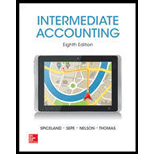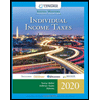
Concept explainers
(1)
Current and Long-Term Liabilities: Liabilities are referred to as the obligations of the business towards the creditors for operating the business. Liabilities may be short-term or long-term depending upon the time duration in which it is paid back to the creditors. Liabilities are classified in to current liabilities and long-term liabilities. Current liabilities are those liabilities which need to be paid within a year. Long-term liabilities are those liabilities that have longer maturity period.
Financial Statements: Financial statements are condensed summary of transactions communicated in the form of reports for the purpose of decision making. The financial statements reports, and shows the financial status of the business. The financial statements consist of the
Financial Disclosures: Financial disclosures refer to all material, significant and relevant information about the reporting organization that are essential to understand the financial statements of the organization entirely. It also helps to evaluate the performance and the financial health of an organization. These disclosures are either provided on the face of the financial statement or as notes to the financial statements as supporting schedules.
GAAP:
Generally Accepted Accounting Principle (GAAP) is a common set of accounting principles, standards, and procedures that the companies must follow at the time of preparation of the financial statements.
IFRS:
International Financial Reporting Standard is abbreviated as IFRS. The IFRS is set up to bring a standard global language in accounting, so that the other firms across the globe can understand the accounting term of all other businesses.
To indicate: The treatment for the amount mentioned as per IFRS and GAAP.
(2)
Liabilities as per GAAP and IFRS.
Want to see the full answer?
Check out a sample textbook solution
Chapter 13 Solutions
INTERMEDIATE ACCOUNTING WITH AIR FRANCE-KLM 2013 ANNUAL REPORT
- On January 3, 2020, Salma Industries acquired equipment for $420,000. The estimated useful life of the equipment is 6 years or 100,000 machine hours, with a residual value of $30,000. What is the book value of the asset on December 31, 2021, if Salma Industries uses the straight-line method of depreciation? Need helparrow_forwardFinancial Accounting Questionarrow_forwardAt the end of last year, the company's assets totaled $945,000 and its liabilities totaled $812,500. During the current year, the company's total assets increased by $48,200 and its total liabilities increased by $30,400. At the end of the current year, stockholders' equity was___. a. $150,300 b. $181,000 c. $128,300 d. $213,700arrow_forward
- I need help answering the following How can I Briefly describe 2 analytical techniques based on the time value of money concepts. And how can I Briefly describe 2 analytical techniques which are not based on the time value of money concepts. Describing what you can consider to be the top 2 advantages and 2 disadvantages of each technique and provide an example to support top advantage of each method.arrow_forwardPlease provide correct solution this accounting questionarrow_forwardThe company should recognize aarrow_forward
 Individual Income TaxesAccountingISBN:9780357109731Author:HoffmanPublisher:CENGAGE LEARNING - CONSIGNMENT
Individual Income TaxesAccountingISBN:9780357109731Author:HoffmanPublisher:CENGAGE LEARNING - CONSIGNMENT Cornerstones of Financial AccountingAccountingISBN:9781337690881Author:Jay Rich, Jeff JonesPublisher:Cengage Learning
Cornerstones of Financial AccountingAccountingISBN:9781337690881Author:Jay Rich, Jeff JonesPublisher:Cengage Learning




